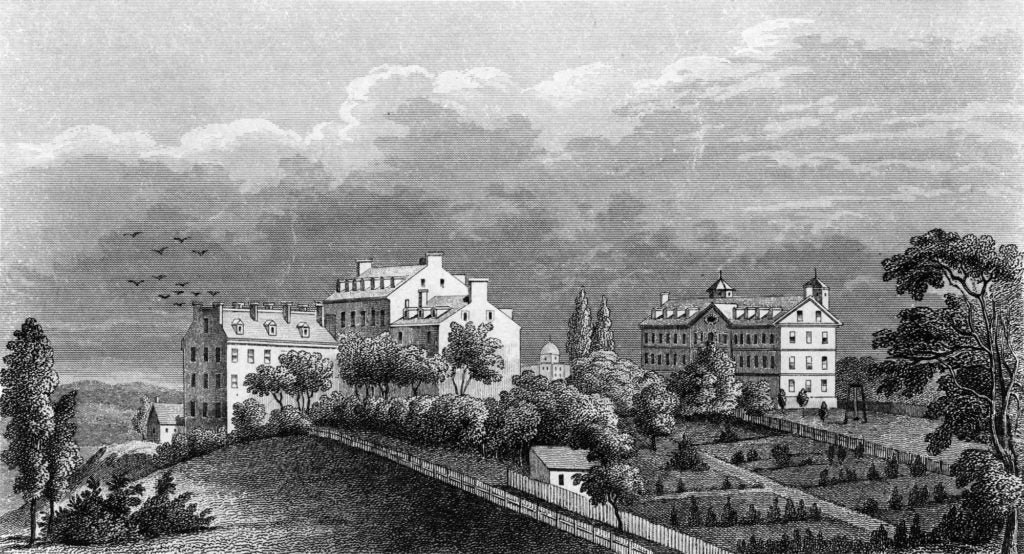Mission Statement and History
Georgetown University College of Arts & Sciences is defined by intellectual curiosity and spiritual vitality. Our commitment to academic excellence in the liberal arts combined with our inclusive Catholic and Jesuit values for social justice, our international outlook, and an advantageous position in vibrant Washington, DC, create a unique undergraduate experience.
College of Arts & Sciences Mission Statement

Georgetown University c. 1850
Founded in 1789 as the nation’s first Catholic institution of higher learning, Georgetown University College of Arts & Sciences is committed to the Jesuit traditions of an integrated education and of productive research in the liberal arts, including fine arts, humanities, languages, sciences, and social sciences. The College seeks to expand the imagination, foster the life of the spirit, cultivate lifelong learning, encourage service to God and humanity, and promote respect for diversity in an age of global community.
Utilizing the national and international resources of Washington, DC, in its research and educational missions, this Catholic college encourages learning that transcends the boundaries of the classroom. It affirms the interconnection of teaching and research and fosters a close relationship between faculty and students in pursuit of common goals. As a community, the Georgetown University College of Arts & Sciences aims to form individuals of integrity who are dedicated to innovation and social justice and prepared to address the challenges of the present and the future in light of the responsibilities of freedom.
A History of the College of Arts & Sciences

Photo By: Phil Humnicky/Georgetown Univ.
The Georgetown University College of Arts & Sciences, the oldest Catholic College in the United States, was founded in 1789 by John Carroll, Archbishop of Baltimore. A progressive citizen of his time, he firmly believed in the principles of the United States Constitution. He made it clear that the new college was to be open to students of every religious persuasion.
On March 1, 1815, President James Madison signed the act of Congress which chartered the College of Georgetown. In 1844, it was incorporated by another congressional act. During the years of the Civil War, Georgetown students fought for the North and South. Later the colors blue and gray were adopted by the College to signify the reunited nation and the sons of Georgetown who had served on both sides in its civil war.
From its founding to the present day, the graduates of the Georgetown University College of Arts & Sciences have taken their places at the forefront of almost every human endeavor. They serve as educators, public servants, and statespeople; they work in business, law, medicine, and research.
Today, proud of its tradition and heritage, Georgetown, through all its graduates, seeks to serve the communities and the world in which it lives. The College exists to provide a liberal education for young people who will be called to intellectual, moral, and professional leadership, and to foster in them a lifelong commitment to the quest for truth.
As a Jesuit college, it draws upon a dynamic tradition of education, characterized by an optimistic Christian humanism and committed to the assumption of responsibility and action. Accordingly, the College seeks to encourage the development of critical powers, respect for tradition and human reason, and an appreciation of life and all its endeavors. It promotes not only the intellectual disciplines but also the search for personal values and convictions that will enable its graduates, throughout their lives, to continue redefining and maturing their thought, and also to continue pursuing the integration of their activities, values, and relations with others.
In light of these aims, the College has developed a diversified academic program in which fundamental issues and ultimate values play an integral role. A high priority is placed on quality teaching and on developing a community of learning among its faculty, students, and administrators.